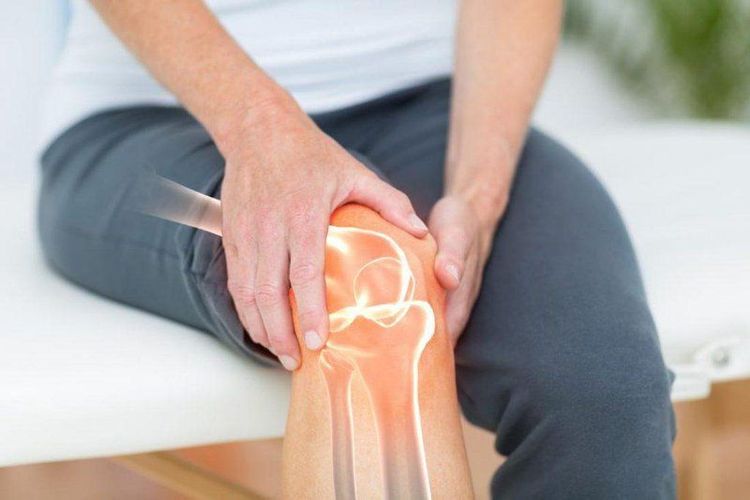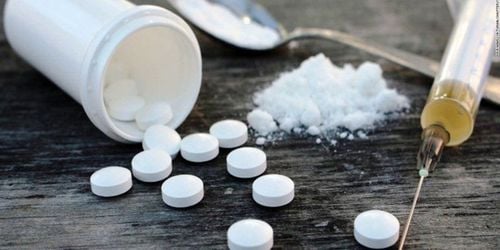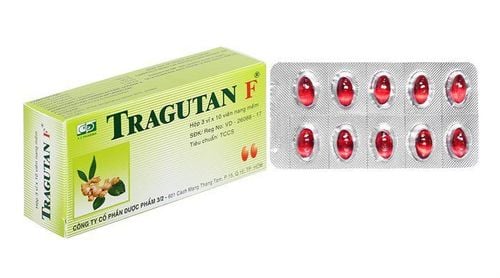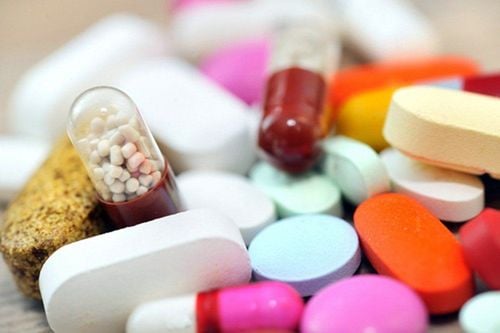This is an automatically translated article.
Removal of bronchial foreign bodies through rigid bronchoscope is an effective method of removing foreign bodies from the trachea. This procedure is performed by experts with experience in rigid bronchoscopy.
1.Remove bronchial foreign body
Removal of bronchial foreign body through rigid bronchoscope is an effective method of removing foreign body from trachea. To perform this method, the patient needs to be under general anesthesia and performed by experts with experience in rigid tube bronchoscopy.
Rigid endoscopy is often used to remove foreign bodies in the airways. The rigid bronchoscope also allows protection of the airways and control of foreign bodies, making it suitable for airway restoration in the event of aspiration. In the case of massive blood loss due to airway bleeding, the rigid endoscopic technique allows electrocautery to be performed to control bleeding thanks to the wide lumen of the tube.
2.Indications and contraindications

Viêm khớp chống chỉ định với lấy dị vật phế quản bằng ống soi cứng
2.1 Indications To remove bronchial foreign body through rigid bronchoscope is indicated in the following cases:
Large foreign body in trachea Tracheobronchial foreign body with high risk of bleeding Failure to remove foreign body by bronchoscopy Flexible tube 2.2 Contraindications Contraindicated to remove bronchial foreign body by rigid bronchoscope in the following cases:
Unstable cervical spine: arthritis, deformity, fixed cervical spine Severe respiratory failure Angina unstable Severe arrhythmia Myocardial infarction
3.How to get bronchial foreign body through rigid bronchoscope

Trường hợp bệnh nhân bị viêm xung quanh dị vật nhiều cần điều trị bằng kháng sinh
3.1 Preparation The person performing the rigid bronchoscope technique is a respiratory physician and nurse trained in bronchoscopy. In addition, medical staff also have to prepare some equipment for the endoscopy process such as:
Bronchoscopy system: endoscope, light source, biopsy pliers,... Medicine: atropin 1⁄ 4mg, lidocan 2%, adrenaline 1mg, salbutamol 0.5mg, methylprednisolone 40mg, ventolin 5mg, seduxen 10mg, midazolam 5mg, adalat 10mg, furosemide 20mg, glucose 5%, sodium chloride 0.9%. Equipment: syringe, needle, cotton, adhesive tape, infusion line, patient tube, fluid container, sterile gloves, sterile gauze, clean gloves, surgical gown, suction machine, oxygen tube, mask oxygen, ambu ball, aspirator, aerosol mask, slide, specimen fixation solution. Tools for removing foreign bodies: specialized pliers, basket, snare, electrocautery catheter to stop bleeding. For the patient, the medical staff will explain the purpose and possible complications, and then sign a commitment to accept the rigid bronchoscopy. The patient should fast for 4 hours before the scan. The patient must undergo flexible bronchoscopy first to determine the location and shape of the foreign body, the inflammatory organization around and below the foreign body. In case of a lot of inflammatory tissue around the foreign body, it is necessary to treat with antibiotics, systemic corticosteroids for 7-10 days before, then repeat bronchoscopy with a flexible bronchoscope to assess the degree of inflammation.
3.2 Procedure Place patient in supine position and anesthetize. It is necessary to ensure good blood oxygen saturation. The patient's head is tilted to the maximum so that the mouth - throat - vocal cords - trachea form a straight line. Hold the endoscope with your right hand, with the bevel facing downwards. Fingers 2, 3 and 4 of the left hand hold the upper jaw firmly when the endoscope is inserted. Place the endoscope at an angle of 900 with the patient's face, then insert the endoscope. When the epiglottis is seen, gradually lower the scope down to the axis of the mouth - pharynx - vocal cords - trachea. Observe the epiglottis, pear sinus, and two vocal cords. Tilt the bronchoscope 90 degrees and insert the scope between the vocal cords while the vocal cords are open. Continue to put the bronchoscope down the trachea, bronchi and observe. When inserting the bronchoscope into the left bronchus, the patient's head should be turned to the right and vice versa. When a foreign body is seen, evaluate:

Lấy dị vật phế quản qua ống soi cứng có thể gặp biến chứng về tim -Rối loạn nhịp tim
Foreign body shape. Inflammatory organization around the foreign body. Risk of bleeding: the extent of tissue proliferation, try pulling the foreign body lightly to see if there is bleeding. In case many inflammatory tissues adhere to the foreign body, electrocoagulation is required to release the foreign body. Select the appropriate tool to remove the foreign body. Foreign body with corners and edges: Use pliers or snare to fix the foreign body and bring it out. Round, smooth foreign body: bring the basket close to the foreign body, slide down and open the basket to put the foreign body in the basket, slowly bring the basket out. Use a soft straw to pass through the bronchoscope to suck up all the fluid and blood. In case of heavy bleeding at the foreign body site, electrocautery can stop the bleeding. Withdraw endoscope. Continue to ventilate the patient. 3.3 Monitoring and management of complications After removing a bronchoscope through a rigid bronchoscope, the patient should be monitored for vital signs such as pulse, temperature, blood pressure, blood oxygen saturation (SpO2) and electricity. heart.
In addition, some complications may be encountered such as:
Decreased blood oxygen Constriction of the larynx, trachea. Laryngeal edema. Arrhythmia, hemodynamic instability. Esophageal or tracheal rupture. Laryngeal trauma. Tooth fracture In summary, bronchial foreign body removal through rigid endoscope is an effective method of removing foreign body from trachea. However, during and after the removal of the foreign body, the patient may experience a number of complications, and therefore should be monitored. When you see any abnormal signs, you should immediately notify the medical staff for timely treatment.
For advice and registration for hard tube bronchoscopy at Vinmec International General Hospital, you can contact HERE.













